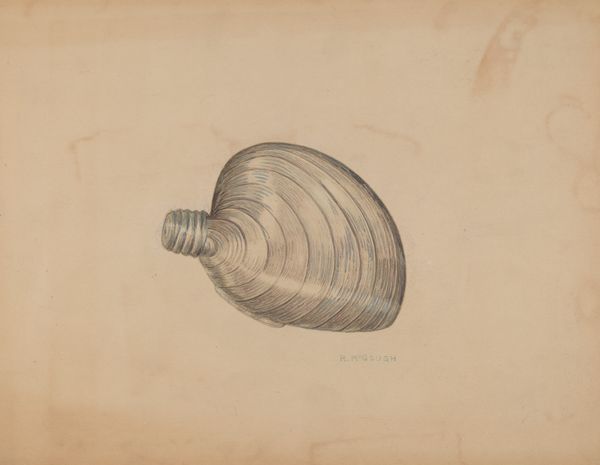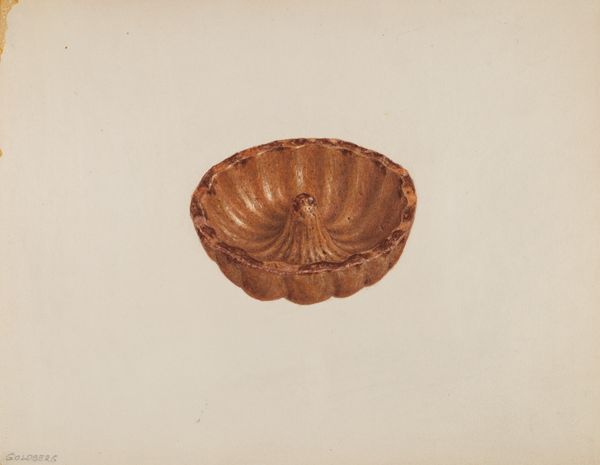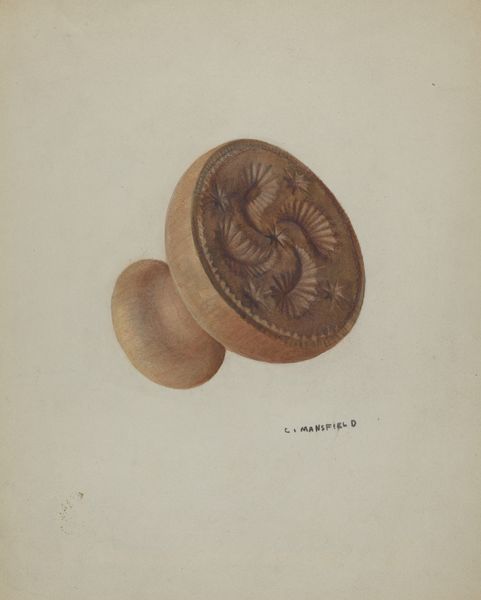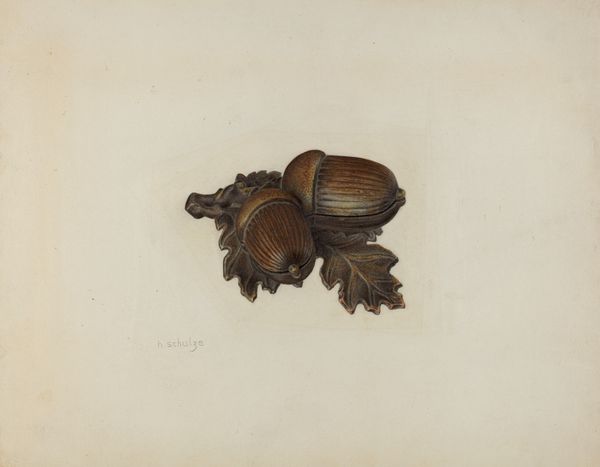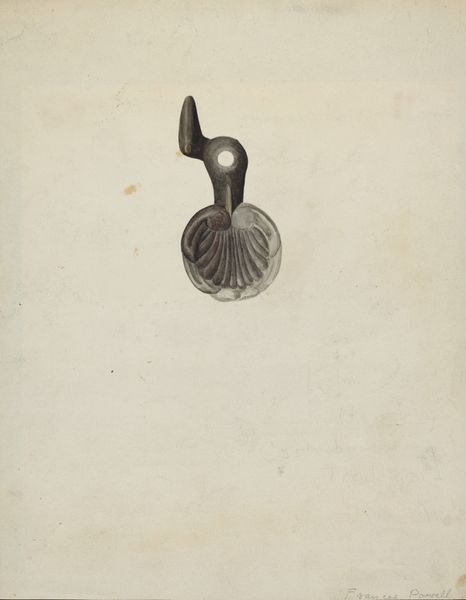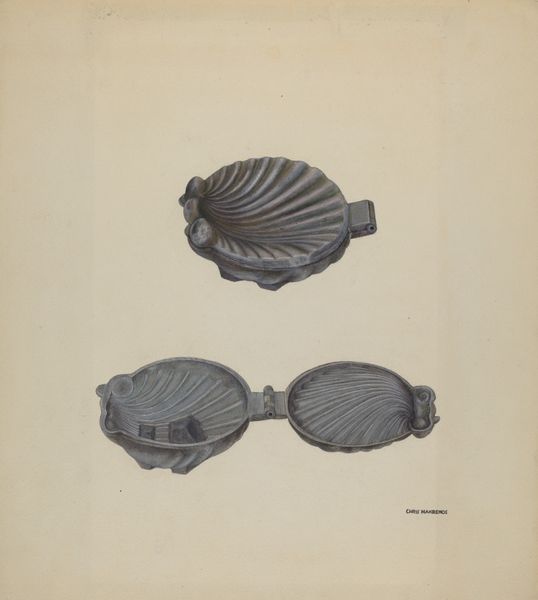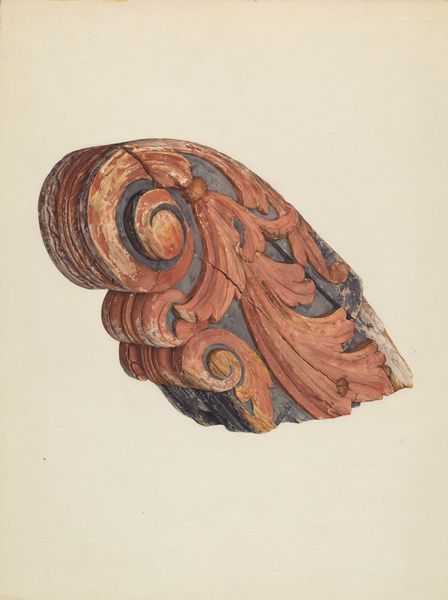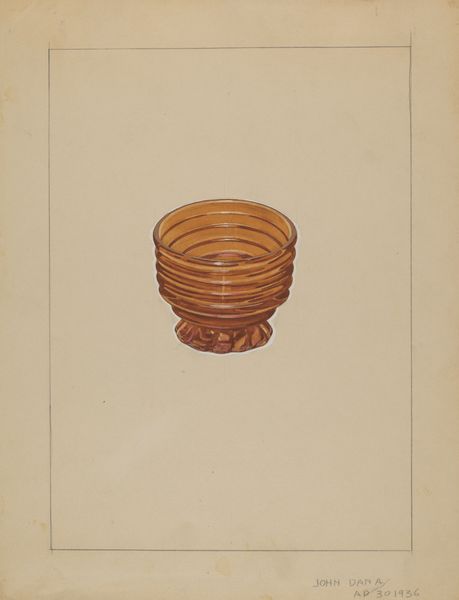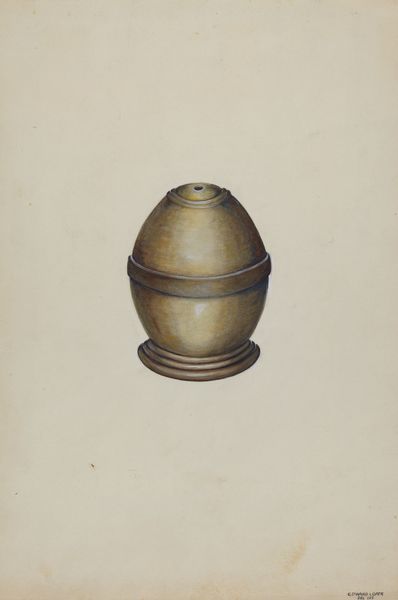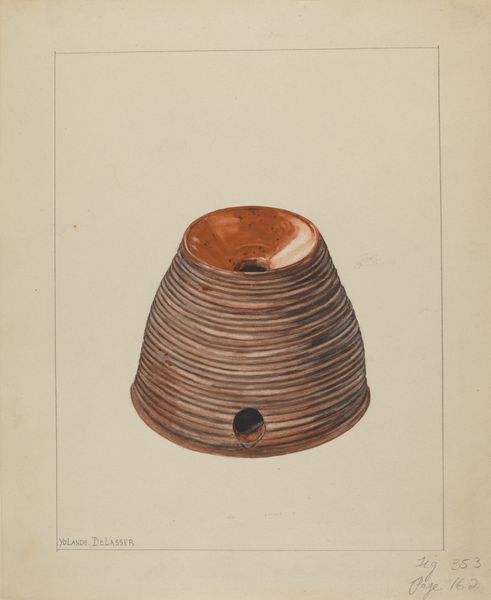
drawing, watercolor
#
drawing
#
charcoal drawing
#
watercolor
#
watercolour illustration
#
modernism
Dimensions: overall: 28 x 22.5 cm (11 x 8 7/8 in.)
Copyright: National Gallery of Art: CC0 1.0
Editor: This is George H. Alexander's "Jelly Mold," likely created around 1940, using watercolor and charcoal. It's such an ordinary subject, but somehow quite striking. What can you tell me about this piece? Curator: It's interesting to consider the socio-economic context. Think about the 1940s - domestic life was often idealized, and culinary skills, particularly elaborate desserts, were markers of a successful homemaker. This jelly mold, rendered with care, elevates the everyday object to a symbol, almost a monument, of domesticity. Editor: A monument? That's an interesting take. So you're saying it’s more than just a picture of a kitchen tool? Curator: Exactly! It’s about the values assigned to that tool and the role it played in shaping societal expectations of women, particularly during wartime when resources were scarce, and "making do" was a virtue. How does the artist's choice of medium affect our interpretation, do you think? The softness of watercolour? The assertive linearity of charcoal? Editor: I suppose watercolour lends a gentler touch than, say, oil paint. It’s almost like a respectful portrait of a simple object. The lines make it really precise, though. It’s like the artist is saying, “look closely; this is important”. Curator: Yes, the combination certainly underscores that contradiction between mundane object and cultural symbol! Think also of the museum space - by exhibiting such a piece, we actively participate in continuing those dialogues on labor, gender, and art. Editor: I hadn’t considered all of that! Now I see it as a quiet statement about home life. I'll definitely look at still lifes differently. Curator: It’s always rewarding to unearth the historical context embedded in seemingly simple artworks, isn't it?
Comments
No comments
Be the first to comment and join the conversation on the ultimate creative platform.
